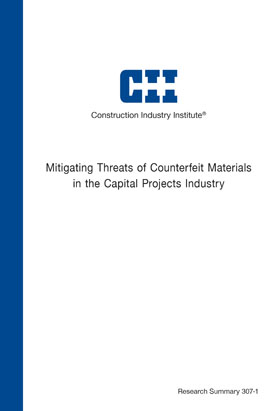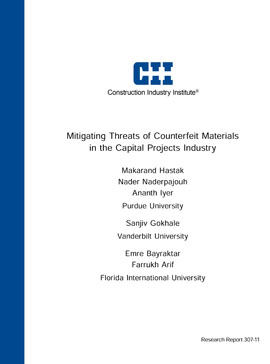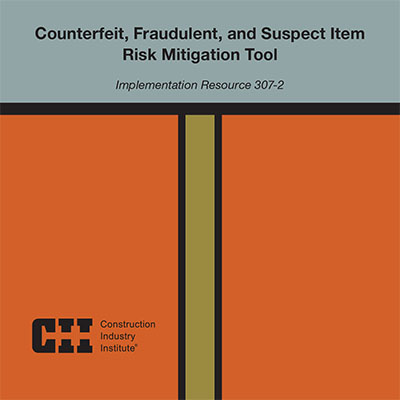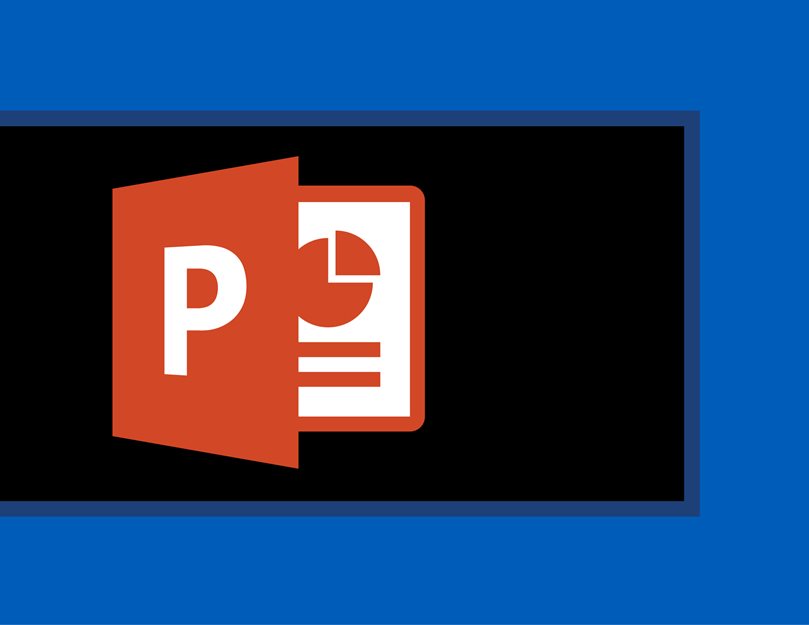
Mitigating Threats of Counterfeit Materials in the Capital Projects Industry
CII established Research Team (RT) 307, Mitigating Threats of Counterfeit Materials in the Capital Projects Industry, to expand upon the research of RT 264, Product Integrity Concerns in Low-cost Sourcing Countries, which documented the variety, scope, and impact of counterfeiting threats affecting the capital projects industry. Beyond reconfirming and updating the status of the threat of counterfeit, fraudulent, and suspect items (CFSI) to the industry, the primary purpose of the RT 307 research was to help CII member companies and other interested parties mitigate the presence and effects of CFSIs in the capital project supply chain. The research team developed effective mitigation strategies, practices, and methods for addressing CFSIs discovered on projects, and further proposes the CII CFSI Risk Mitigation Framework to help CII member companies reduce their exposure to CFSI. CII member companies can use this framework at a company or business unit level to improve their internal management processes for blocking CFSIs from their capital project supply chains. The framework can also help organizations improve the identification, assessment, mitigation, and communication components of their risk management programs.
To support the framework, the research team developed a catalog of 19 CFSI risk mitigation strategies, a resource that presents each strategy, explains its implementation, and discusses the challenges inherent to mitigating the type of CFSI it addresses. Any organization can modify the catalog to make it an evolving (customized) point of reference on CFSI risks. (See Chapter 4 of this research summary for an overview of the catalog and see Implementation Resource (IR) 307-2 for a detailed discussion of its use.)
RT 307 also studied alternative solutions and the feasibility of mitigating CFSIs at the industry level. As a result, the research team developed a phased approach to implement the research findings. The first phase is to apply the framework at the individual CII membership level. The second phase is to expand this application at the broader level of the entire CII membership and the construction industry. Applying a uniform framework across the entire industry would create alignment on data collection and data evaluation. Such uniformity would provide the basis for developing and implementing a CFSI database to facilitate the timely exchange of accurate data on CFSI at an industry level. (See Research Report 307-11, Mitigating Threats of Counterfeit Materials in the Capital Projects Industry, for details on this phased database approach.)
In the second phase CII would collect the data from CII member companies and channel it to a data exchange program after appropriate review. After collecting the data, CII would analyze it and publish any CFSI trends and patterns detected. Beyond requiring the collaboration of CII members, this phase would also require governance and logistical support from CII. Important motivations for this CII-centered initiative include the following:
- CII leads anti-CFSI efforts within the construction industry.
- CII would extend its role as a facilitator of industry collaboration.
- CII can facilitate the anti-CFSI actions of its membership.
- CII is at the forefront for reporting trends in the construction industry.
- As a research organization, CII can avoid some regulatory issues (e.g., anti-trust).
This research summary is composed of five chapters: an introduction delineating the scope and objectives of the research, as well as the expected output; two subsequent chapters that discuss the research methodology, data analysis, and the key findings; a fourth chapter summarizing the CFSI Framework and implementation model; and, a final chapter of conclusions and recommendations for future CFSI research.
The nature of the capital projects industry necessitates a construction specific approach to mitigating CFSI incidents.
The capital projects industry is particularly vulnerable to CFSI because its characteristics and exigencies so differentiate it from other industries (e.g., unrepeatable projects, high initial investments, long payback periods, multiple-party involvement, and tight profit margins).
The research team developed the CFSI Framework through methodical research of CFSI incidents and existing mitigation strategies. The research consisted of four distinct stages which are described in detail in the research summary. (RS307-1, p.5)More than half (53%) of the identified CFSIs were detected after completion. The mostly widely reported CFSI continues to be bulk items. (RS307-1, p. 6)
- The high rate of CFSI detection after installation and completion (e.g., 53 percent) highlights the need for comprehensive training of personnel to prevent the introduction of CFSI into the supply chain.
- The findings of RT-307 re-confirmed those of RT-264. In both cases, valves, fasteners, bolts, and pipe were found to be some of the most widely reported CFSI.
Surveys and interviews confirmed that counterfeiting continues to be a complex and dynamic threat to the construction industry.
The research team noted the following key points based upon analysis of the survey results:
- The absence of training suggests that companies that did not report CFSI incidents may not have discovered counterfeit items that were in fact present. Thus, it is reasonable to assume that the incidence of CFSI and its consequences are much greater than reported.
- The general lack of reporting allows counterfeit items and counterfeiters to continue to plague the industry.
- The industry and CII have a unique opportunity to employ a collaborative information-sharing system as a measure to prevent CFSI incidents.
A detailed discussion of the survey results can be found in the research summary (RS307-1, p. 1).
No single method can – by itself – effectively prevent infiltration of CFSI into the supply chain.
Survey respondents identified a wide range of methods and technologies that are being used to mitigate the introduction of CFSI. In line with this, the research included 19 risk mitigation strategies in the CII Catalog of CFSI Risk Mitigation Strategies, which is contained in the CII CFSI Risk Mitigation Framework. (RS307-1, p. 11)
Survey respondents look to CII to provide guidelines and act as a conduit for aggregation and sharing of CFSI information in order to avoid legal concerns. (The aggregation and sharing could be managed by an organization other than CII, but it necessitates meeting provisions to assure no legal issues.)
Both the main and the follow up surveys showed that:
- Survey respondents viewed the risk associated with CFSI as important, but did not agree on the next steps needed to mitigate this risk.
- Survey respondents were reluctant to share CFSI data in a common database, but expressed interest in CFSI guidelines provided by CII.
This suggests that it may be important for CII to offer specific ways to share useful information, while avoiding associated legal concerns related to data-sharing. In line with this, the team identified existing data exchange initiatives (e.g., EPRI, iNEMI, GIDEP, and ERAI) that may serve as a model for such an effort.
Ultimately, the research concluded that any data-aggregation and -sharing effort must be managed in such a manner that it balances the need for privacy against the need for useful data.
The research team proposed a comprehensive risk-based framework for the mitigation of CFSI risk in the capital projects industry; this approach is structured around risk identification, risk assessment, risk mitigation, and risk communication. (RS307-1, p. 12)
This framework consists of four components, which are described in detail in the research summary:
- The risk identification component provides a common structured format for the collection of information that may be used to analyze risk scenarios and mitigation actions.
- The risk assessment component is designed to gauge the risk of CFSI infiltration into the project supply chain.
- The risk mitigation component consists of a catalog of 19 risk mitigation strategies.
- The risk communication component is used to communicate the identified risk and create the awareness needed to help mitigate the threat of CFSI at both the supply chain and industry levels.
The research team developed a two-phase collaborative initiative to align CFSI mitigation actions across the construction industry. The two phases consist of: 1) application of the CFSI Framework at the CII membership level, with its eventual expansion to the construction industry 2) a collaborative CFSI initiative centered at CII. (RS307-1, p. 11)
The proposed CFSI collaborative initiative provides the basis for CII to act as this industry-level champion. This initiative, which would be modeled on existing CII safety initiatives, is envisioned as the focal point for actions to reduce the threat of CFSI entry at the industry level.
The initiative consists of a two-phase approach which is described in detail in the research. The initial phase would focus on CFSI mitigation at company level, while the second phase would focus on industry level CFSI mitigation.



